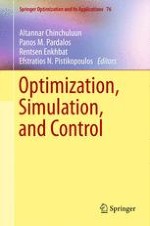2013 | OriginalPaper | Chapter
The Changing Role of Optimization in Urban Planning
Authors : James Keirstead, Nilay Shah
Published in: Optimization, Simulation, and Control
Publisher: Springer New York
Activate our intelligent search to find suitable subject content or patents.
Select sections of text to find matching patents with Artificial Intelligence. powered by
Select sections of text to find additional relevant content using AI-assisted search. powered by
